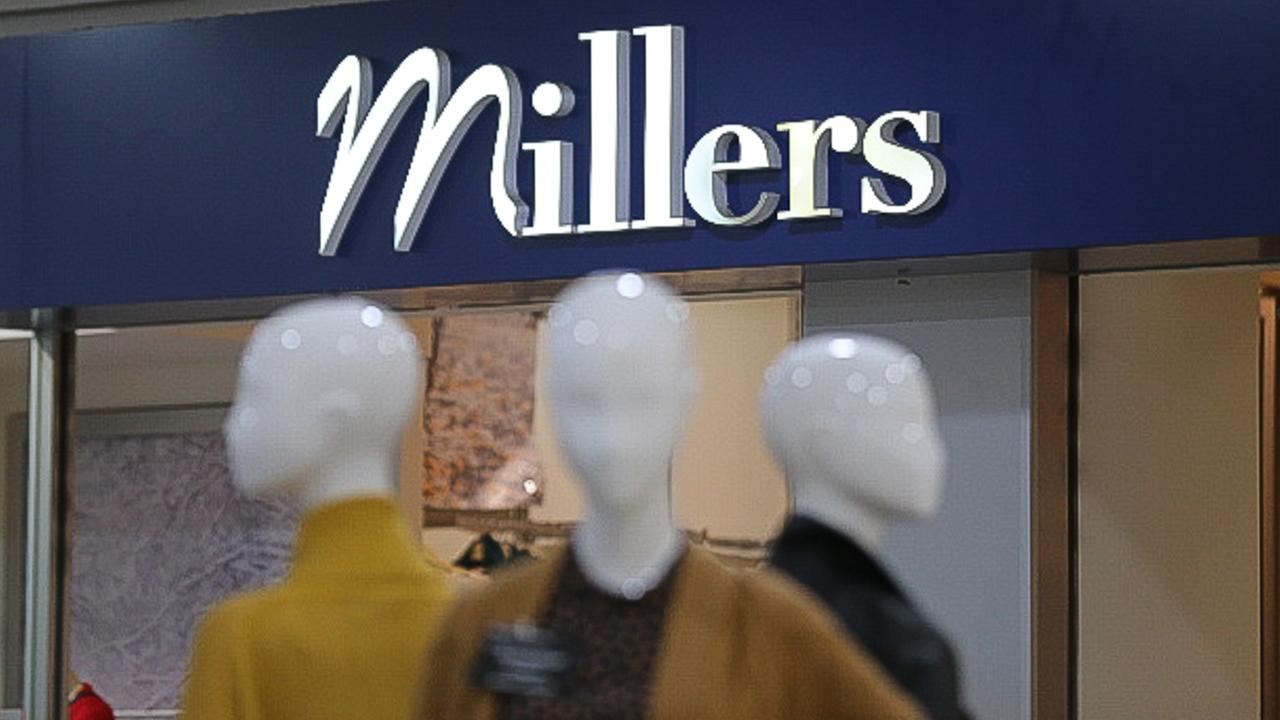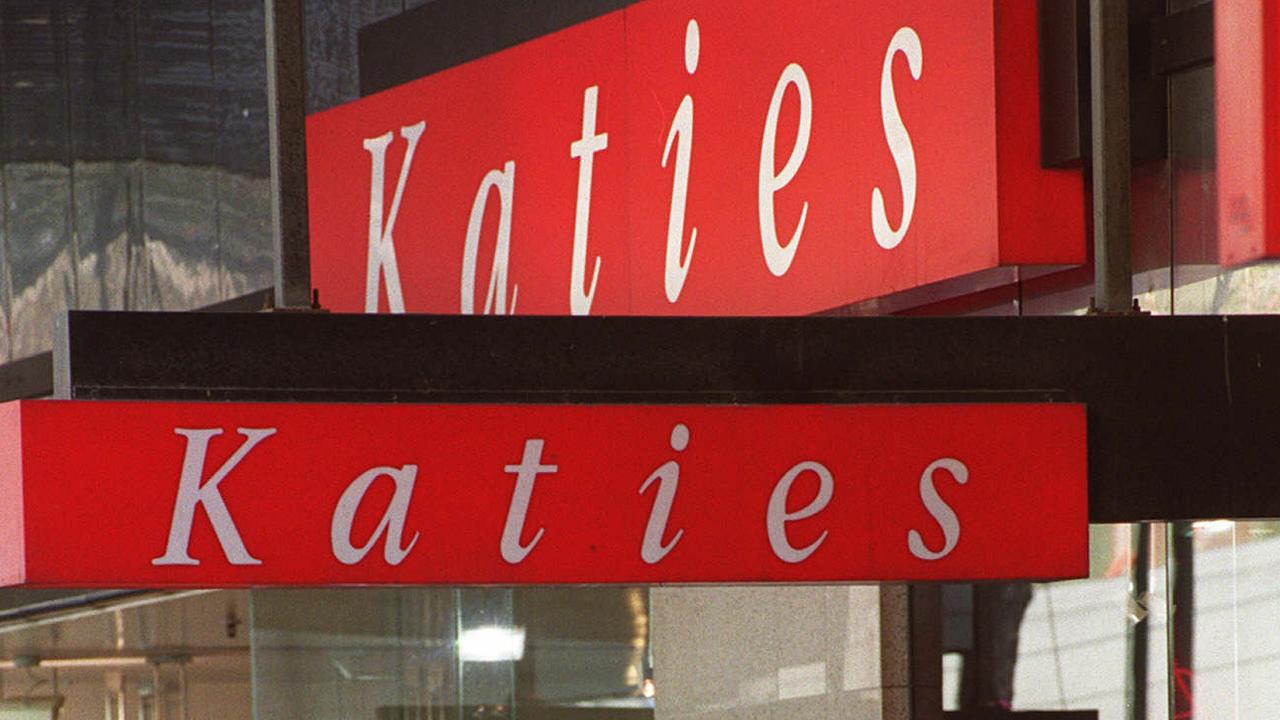Mosaic Brands voluntary administration marked a significant event in Australian retail. This case study explores the financial factors leading to the company’s decision, the subsequent administration process, and its impact on various stakeholders, including employees, creditors, and shareholders. We will delve into the strategic missteps, the restructuring attempts, and ultimately, the lessons learned from this challenging period for the once-prominent brand.
Understanding this situation provides valuable insights into the complexities of business management and the importance of proactive financial planning.
The analysis will cover the timeline of events, the roles of administrators, and the potential outcomes resulting from the voluntary administration. We will also compare Mosaic Brands’ experience with similar companies facing financial distress, highlighting best practices for financial management and risk mitigation. The goal is to provide a comprehensive understanding of this case, offering valuable lessons for businesses seeking to navigate financial challenges and maintain long-term stability.
Mosaic Brands’ Financial Situation Leading to Voluntary Administration
Mosaic Brands’ entry into voluntary administration in 2020 was the culmination of several years of declining financial performance, exacerbated by strategic missteps and a challenging retail environment. The company, which owned a portfolio of well-known Australian clothing brands, struggled to adapt to changing consumer preferences and the rise of online shopping. This led to a significant deterioration in key financial indicators, ultimately resulting in unsustainable debt levels and the need for restructuring.The company’s financial difficulties were characterized by declining revenues, shrinking profit margins, and increasing debt.
These issues stemmed from a combination of factors, including intense competition, changing consumer behavior, and a failure to effectively implement necessary strategic adjustments. The accumulation of debt significantly hampered the company’s operational flexibility and ability to invest in necessary improvements.
Key Financial Indicators Preceding Voluntary Administration
Several key financial indicators consistently pointed towards Mosaic Brands’ deteriorating financial health in the years leading up to its voluntary administration. These included a consistent decline in revenue, shrinking gross profit margins, and a substantial increase in debt levels. For example, reports showed a steady erosion of sales figures over several consecutive quarters, coupled with a decline in profitability as operating costs remained high.
This unsustainable trend significantly impacted the company’s cash flow, making it increasingly difficult to meet its financial obligations.
Debt Levels and Their Impact on Operations
Mosaic Brands carried a substantial debt burden, which significantly constrained its operational flexibility and ability to respond effectively to the changing retail landscape. High interest payments consumed a considerable portion of the company’s cash flow, leaving less capital available for investment in new technologies, marketing initiatives, or store upgrades. This debt burden limited the company’s capacity to adapt to the evolving consumer preferences and compete effectively against more agile and financially stable competitors.
The inability to invest in crucial areas hindered growth and further exacerbated the company’s financial woes.
Timeline of Significant Financial Events
A series of significant financial events contributed to the eventual voluntary administration. While precise dates require referencing specific financial reports, a general timeline would include a period of declining sales, followed by attempts at cost-cutting measures and strategic restructuring. These efforts, however, proved insufficient to address the underlying financial issues. The increasing debt burden further intensified the pressure, ultimately leading to the decision to enter voluntary administration as a means to restructure the business and explore options for its survival.
Strategic Decisions Contributing to Financial Difficulties
Several strategic decisions made by Mosaic Brands contributed to its financial difficulties. These might include decisions related to expansion, marketing strategies, or the handling of inventory. For example, a focus on physical store expansion in a period of rapid growth of online retail may have diverted resources away from more successful online initiatives. Furthermore, an inability to effectively adapt the brand portfolio to changing consumer trends may have resulted in declining sales of certain product lines, leading to increased inventory and write-offs.
The cumulative impact of these strategic decisions, combined with external market pressures, resulted in the company’s dire financial situation.
Impact on Stakeholders: Mosaic Brands Voluntary Administration
Voluntary administration significantly impacts various stakeholders involved with Mosaic Brands. Understanding these impacts is crucial for assessing the potential outcomes and the future of the company. The consequences will vary depending on the specifics of the administration process and any subsequent restructuring or liquidation.
Impact on Employees
The impact on Mosaic Brands’ employees is potentially severe. Job losses are a significant risk during voluntary administration. Employees may face redundancy, loss of income, and the need to seek new employment. The level of severance pay and support offered will depend on the company’s financial position and the terms negotiated with employee representatives. For example, a company undergoing similar circumstances might offer a redundancy package including several weeks’ salary and outplacement services.
However, the extent of support offered will vary based on factors like the company’s financial health and existing employment contracts.
Impact on Creditors
Creditors, including suppliers, banks, and other lenders, face uncertainty regarding the repayment of their debts. The amount they recover will depend on the assets available for distribution during the administration process. Creditors’ claims are ranked according to priority, with secured creditors generally having a higher priority than unsecured creditors. This means secured creditors, those with a lien on specific assets, are more likely to receive a larger portion of their owed funds.
Unsecured creditors, such as suppliers, may receive only a small percentage, or potentially nothing at all, depending on the available assets and the claims of other creditors. For example, a large bank loan secured against the company’s property might receive priority repayment, while smaller suppliers might only receive a fraction of what is owed.
Impact on Shareholders
Shareholders are likely to experience a significant loss of investment. The value of their shares will likely plummet during voluntary administration, potentially becoming worthless if the company is liquidated. Shareholders are typically the last in line to receive any distribution of assets, and their claims are usually only satisfied after all other creditors have been addressed. In the event of liquidation, shareholders are unlikely to receive any return on their investment.
Recent news regarding Mosaic Brands’ financial difficulties has understandably caused concern among stakeholders. Understanding the complexities of this situation requires careful consideration, and a valuable resource for detailed information is available at mosaic brands voluntary administration. This site offers insights into the voluntary administration process and its potential implications for the future of the company. Further analysis of Mosaic Brands’ voluntary administration will be crucial in assessing the long-term effects.
This outcome mirrors numerous instances where shareholders in companies entering voluntary administration experienced a complete loss of their share value.
Impact on Customers
Customers may experience disruptions to services, such as returns, exchanges, and warranties. The availability of products and ongoing customer support may also be affected depending on the outcome of the voluntary administration. While customers are generally not considered creditors in the same way as suppliers or lenders, disruptions to services and potential loss of goods can still represent a significant impact.
For instance, gift cards may lose value, and ongoing warranty support may be compromised.
| Stakeholder Group | Potential Positive Outcomes | Potential Negative Outcomes | Example/Real-life Case |
|---|---|---|---|
| Employees | Potential re-employment within restructured company, severance packages | Job losses, reduced wages, loss of benefits | Company X offered severance packages and retraining programs during restructuring |
| Creditors | Partial repayment of debts, secured creditors prioritized | Significant loss of funds, potential write-off of debts | Bank A received prioritized repayment due to secured loan; smaller suppliers received minimal funds. |
| Shareholders | Minimal chance of any return on investment | Complete loss of investment, devaluation of shares | Shareholders in Company Y experienced a complete loss of investment after liquidation. |
| Customers | Continued access to products and services (depending on outcome) | Disruptions to services, loss of warranty support, potential loss of value in gift cards | Company Z experienced delays in processing returns and exchanges during administration. |
Potential Outcomes and Restructuring Strategies
Voluntary administration offers Mosaic Brands several potential paths forward, each with varying implications for creditors, employees, and the company’s future. The ultimate outcome will depend on the success of the restructuring plan developed during this period and the willingness of stakeholders to cooperate. A thorough assessment of the company’s assets, liabilities, and market position is crucial to determining the most viable option.The voluntary administration process aims to maximize the return to creditors while exploring options to preserve the business as a going concern.
Several potential outcomes exist, ranging from a successful reorganization and emergence from administration to liquidation and the sale of assets. Effective restructuring requires a multi-pronged approach focusing on cost reduction, debt management, and strategic adaptation to market trends.
Potential Outcomes of Voluntary Administration
The voluntary administration process for Mosaic Brands could result in several distinct outcomes. These range from a complete business rescue and reorganization, allowing it to continue operations under a revised business model, to a partial sale of assets, or ultimately, liquidation. A successful reorganization would involve renegotiating debt, reducing operational costs, and potentially divesting from underperforming brands or store locations.
Conversely, a less favorable outcome might involve the sale of individual brands or the liquidation of the entire business, with assets distributed among creditors according to the priority of their claims. The outcome will be largely determined by the success of the administrators in achieving a workable restructuring plan that is acceptable to creditors.
Potential Restructuring Plan for Mosaic Brands
A potential restructuring plan for Mosaic Brands should prioritize cost reduction, debt management, and strategic adaptation. Cost-cutting measures could include streamlining operations, reducing store footprints (potentially closing underperforming locations), renegotiating supplier contracts, and implementing more efficient inventory management systems. For example, consolidating distribution centers and optimizing logistics could significantly reduce warehousing and transportation costs. Similarly, a shift to a more digitally-focused business model could reduce reliance on expensive physical retail locations.
Debt Reduction and Improved Financial Stability
Debt reduction is crucial for Mosaic Brands’ long-term viability. Strategies could include negotiating with creditors to extend repayment terms, potentially converting some debt into equity, and exploring asset sales to generate cash. For example, selling non-core assets or underperforming brands could free up capital to address more pressing financial obligations. Securing additional financing, perhaps through a combination of equity investment and bank loans, might also be necessary to support the restructuring process.
A focus on improving profitability through increased sales and enhanced operational efficiency is essential to building long-term financial stability.
Adapting to Changing Market Conditions
Mosaic Brands needs to adapt to the evolving retail landscape. This requires a comprehensive strategy focusing on enhancing the customer experience, embracing e-commerce, and potentially rebranding or repositioning some of its brands to better resonate with target demographics. For instance, investing in a robust online platform with enhanced features such as personalized recommendations and improved customer service could significantly boost online sales.
Furthermore, leveraging data analytics to understand customer preferences and tailor product offerings accordingly is crucial for long-term success. Adapting to changing consumer preferences, such as a growing demand for sustainable and ethically sourced products, is also critical for the brand’s future. Examples of successful retailers who have adapted to changing market conditions by embracing omnichannel strategies and focusing on customer experience include companies like Nike and Sephora, which have successfully integrated their online and offline presence to enhance the customer journey.
Lessons Learned from Mosaic Brands’ Case
The collapse of Mosaic Brands serves as a stark reminder of the challenges facing even established retail businesses in a rapidly changing market. Analyzing its downfall provides invaluable insights for other companies seeking to avoid a similar fate. By understanding the key factors contributing to Mosaic’s difficulties, businesses can implement proactive strategies to enhance their financial stability and long-term viability.The Mosaic Brands case study highlights the critical importance of several key business practices, particularly in the face of economic uncertainty and evolving consumer behavior.
Failure to adapt to these changes, coupled with inadequate financial planning and risk management, contributed significantly to the company’s demise. The following analysis Artikels key lessons and best practices for businesses to consider.
Key Lessons for Business Sustainability
Mosaic Brands’ experience underscores the necessity of a holistic approach to business management, encompassing financial prudence, adaptable strategies, and a deep understanding of the market. Ignoring any of these elements can have severe consequences. The company’s struggles highlight the importance of consistently monitoring financial health, adapting to market changes, and fostering a culture of proactive risk management. A failure to adapt to changing consumer preferences, coupled with a lack of sufficient financial reserves, ultimately led to the company’s downfall.
The case serves as a cautionary tale for businesses of all sizes.
Recent news regarding Mosaic Brands’ financial difficulties has understandably caused concern among stakeholders. Understanding the complexities of this situation requires careful consideration of the details surrounding the company’s entry into voluntary administration, as outlined in this helpful resource: mosaic brands voluntary administration. This process will ultimately determine the future trajectory of Mosaic Brands and its impact on employees and consumers alike.
Best Practices for Financial Management and Risk Mitigation
Effective financial management is paramount for business survival. Proactive strategies are crucial in navigating economic downturns and unforeseen circumstances. The following best practices can significantly reduce financial risks and enhance a company’s resilience:
- Diversify Revenue Streams: Over-reliance on a single product line or market segment exposes a business to significant risk. Diversification mitigates the impact of downturns in specific areas. For example, a company heavily reliant on physical retail stores should consider expanding its online presence and exploring alternative sales channels.
- Maintain Adequate Cash Reserves: Sufficient cash flow is essential for weathering economic storms. Building and maintaining a substantial cash reserve allows businesses to meet their obligations even during periods of reduced sales. This acts as a buffer against unexpected expenses and downturns.
- Regular Financial Monitoring and Analysis: Continuous monitoring of key financial indicators, such as cash flow, profitability, and debt levels, allows for early detection of potential problems. Regular analysis helps identify areas needing improvement and allows for timely intervention.
- Implement Robust Inventory Management Systems: Efficient inventory management minimizes the risk of overstocking or stockouts. This reduces storage costs and ensures that products are available when customers demand them. Sophisticated inventory management systems using data analytics can help optimize stock levels.
- Develop a Comprehensive Risk Management Plan: Identifying and assessing potential risks, such as economic downturns, supply chain disruptions, and changing consumer preferences, is crucial. Developing contingency plans for mitigating these risks is essential for business continuity.
Proactive Financial Planning and Early Intervention
Proactive financial planning is not a luxury but a necessity. Early intervention is key to preventing financial distress. By anticipating potential challenges and developing strategies to address them, businesses can significantly improve their chances of survival. This includes scenario planning, which involves developing different financial models based on various economic and market conditions. For instance, Mosaic Brands could have modeled scenarios considering a potential decline in consumer spending and adjusted their strategy accordingly.
Regular stress testing of the financial model allows for early identification of potential weaknesses.
Adapting to Evolving Consumer Trends and Market Dynamics, Mosaic brands voluntary administration
The retail landscape is constantly evolving. Businesses must adapt to changing consumer preferences and market dynamics to remain competitive. This requires continuous monitoring of market trends, consumer behavior, and technological advancements. For example, the rise of e-commerce and the shift towards online shopping significantly impacted Mosaic Brands. Companies need to embrace digital transformation and invest in technologies that enhance customer experience and streamline operations.
Understanding and responding to evolving consumer preferences, such as a shift towards sustainable and ethically sourced products, is equally important.
Illustrative Case Study
This section examines the case of another retail company that faced significant financial challenges, providing a comparative analysis with Mosaic Brands’ situation. By comparing and contrasting their strategies and financial health before the crises, we can gain further insights into the complexities of retail business management and the factors contributing to financial distress. The chosen comparative case is that of Limited Brands (now L Brands), a significant player in the American retail market, which experienced substantial financial difficulties in the mid-2010s.
Limited Brands’ Financial Difficulties and Response
Limited Brands, known for brands like Victoria’s Secret and Bath & Body Works, faced declining sales and profitability in the mid-2010s. This downturn was attributed to several factors, including changing consumer preferences, increased competition from online retailers, and struggles with the Victoria’s Secret brand’s image. Their response involved a multi-pronged approach including store closures, cost-cutting measures, and a strategic refocusing on their more successful brands, such as Bath & Body Works.
They also invested in their e-commerce platforms and explored new marketing strategies to revitalize their brand image. Unlike Mosaic Brands, which entered voluntary administration, Limited Brands managed to navigate its financial difficulties without resorting to insolvency proceedings.
Comparison of Strategies Employed by Mosaic Brands and Limited Brands
Mosaic Brands and Limited Brands, while both facing retail challenges, employed different strategies. Mosaic Brands opted for voluntary administration, a process that allows for restructuring under court supervision. This involved negotiating with creditors, potentially selling assets, and implementing a turnaround plan. Limited Brands, conversely, implemented internal restructuring, focusing on cost reduction, brand revitalization, and strategic investment in its stronger performing divisions.
This difference in approach reflects variations in company size, debt structure, and the severity of the financial crisis.
Visual Representation of Financial Health Before Difficulties
Imagine two line graphs representing the financial health of Mosaic Brands and Limited Brands in the years leading up to their respective challenges. For Mosaic Brands, the graph would show a gradual decline in revenue and profitability over several years. The line representing revenue would show a consistent downward trend, while the profit margin line would demonstrate a sharper, more dramatic decrease, indicating increasing losses.
The overall picture would suggest a company struggling to adapt to changing market conditions and facing mounting financial pressure. In contrast, Limited Brands’ graph would initially show a period of strong performance, with relatively stable revenue and profit margins. However, towards the period of difficulty, a noticeable plateauing and then a slight decline in revenue and profit margins would become evident.
This visual representation would highlight that while both companies experienced financial difficulties, Limited Brands started from a position of greater financial strength compared to Mosaic Brands. The contrast illustrates the different starting points and trajectories leading to their respective crises.
The Mosaic Brands voluntary administration serves as a stark reminder of the precarious nature of retail in a dynamic market. While the specific circumstances surrounding Mosaic Brands are unique, the underlying lessons regarding financial planning, debt management, and adapting to changing consumer trends are universally applicable. By examining the strategic choices made, the impact on stakeholders, and the potential outcomes, businesses can learn valuable lessons in risk mitigation and proactive financial management to improve their resilience in the face of economic headwinds.
The case underscores the importance of continuous adaptation and the critical need for early intervention when financial difficulties arise.
Question & Answer Hub
What are the potential long-term effects on the Mosaic Brands brand image?
The long-term impact on the brand image is uncertain. Successful restructuring could lead to a revitalized brand, while failure might result in lasting negative perceptions among consumers.
What support was offered to employees during the voluntary administration?
The level of support offered to employees varied and depended on the specific details of the administration process. This likely included assistance with job searching and potential government benefits.
Could Mosaic Brands have avoided voluntary administration?
Potentially. Earlier intervention, more aggressive cost-cutting measures, and a quicker adaptation to changing market conditions might have improved their financial situation.
What is the likelihood of Mosaic Brands emerging from voluntary administration as a viable business?
The viability depends on the success of the restructuring plan and the ability to secure necessary funding and regain consumer trust. The outcome remains uncertain.




